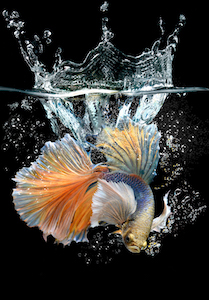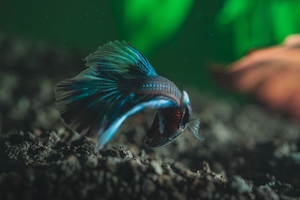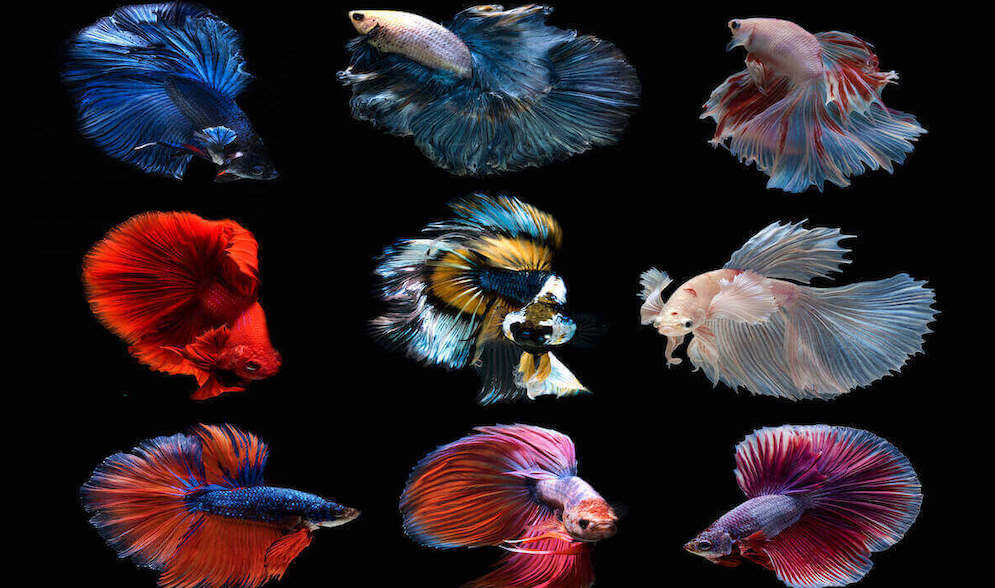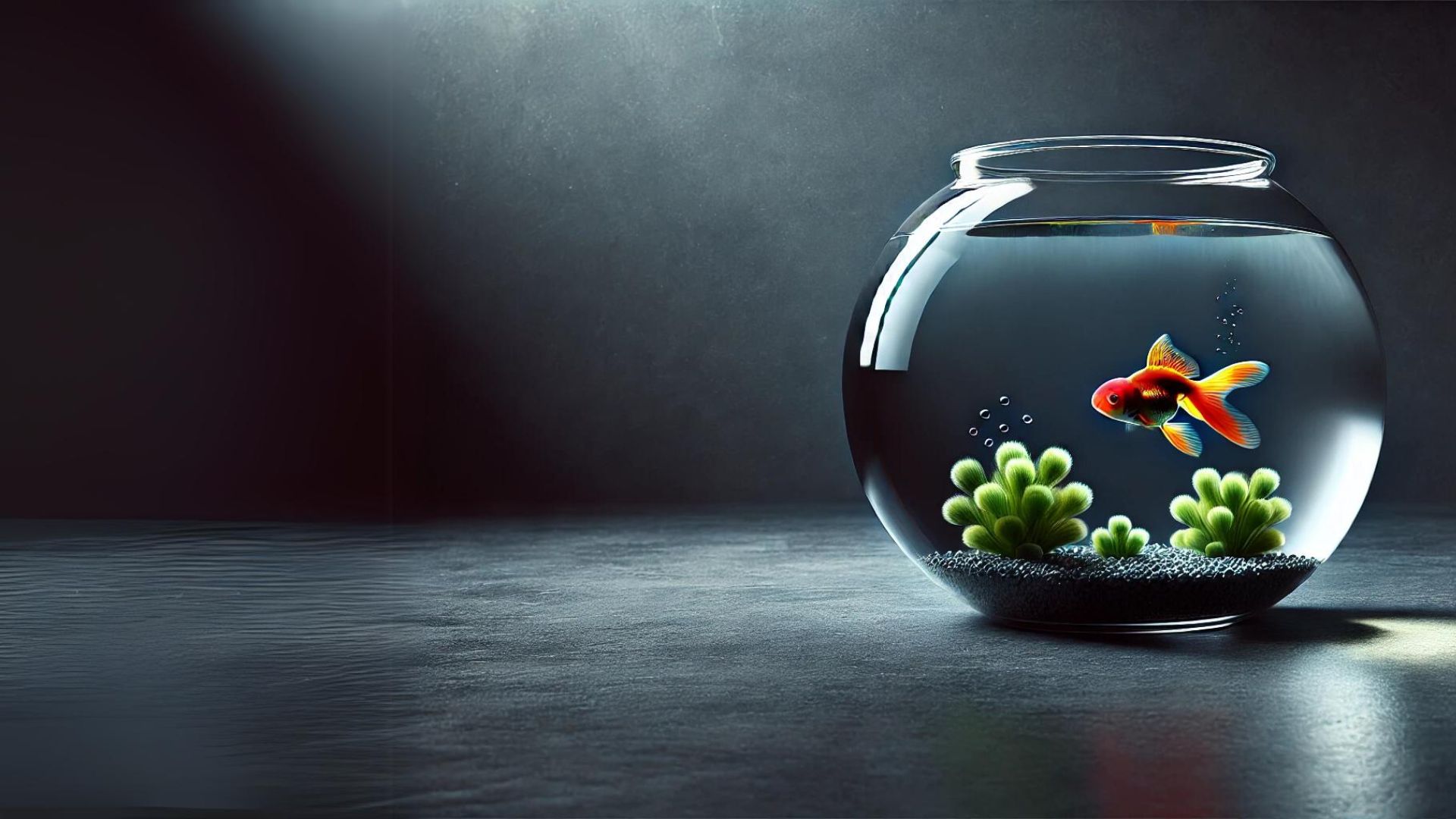Betta fish are known for their vibrant colors and beauty, but caring for them goes beyond their appearance. Most bettas in pet stores are kept in tiny containers—fine for transport, but not suitable for long-term care.
When it comes to creating their future home, there are a few things that you will need to consider when setting up their tank. Often people are attracted by the color scheme of betta fishes, which is fine. Still, many owners fail to maintain to keep their living conditions as stress-free as possible.
Maintaining a stress-free environment is key to a betta fish’s survival. This article covers the steps which one can follow to create a comfortable and cozy aquarium for your betta fish.
Tank and Accessories
Tank Size and Requirements for Betta Fish
One common myth is that people believe that a betta fish is a hardy fish because they are living in ponds, rice paddles, and slow-moving streams. This leads to the misconception of believing that they can comfortably live in small spaces like vases or small bowls. Bettas require a minimum of 5 Gallons (19 Liters) for them to thrive.
The choice of the tank should either be glass or clear acrylic. The following are the benefits of larger tanks:
- Less fluctuation in temperature and pH values.
- More space for adding plants and decorations and giving betta fish space to hide.
- It can help in reducing the frequency of water changes.
While choosing a horizontal or vertical tank, it’s better to go for the tank having more length than height as betta fish’s natural environment is shallow streams. So, having a deep tank will not be beneficial for betta fishes. Also, they’ll have plenty of space to swim naturally.
2) Tank Cover / Lid

Betta fishes are excellent jumpers, so it’s essential to have a lid on the tank to keep them from jumping out. It happens all the time, and it’s an unfortunate way to lose betta.
3) Tank Light
Tank lights help to illuminate the brilliant colors of betta fish. Tank lights also make it easier to spot fish, help identify any tank problems, and help promote the day and night patterns. It is essential in regulating healthy sleeping and eating habits of fish. Turning the light on during the day and turning it off at night will help to mimic the betta fish’s natural environment.
Place the tank in such a way that it is not affected by direct sunlight or any heating unit because it will lead to a sudden increase in water temperature and extreme growth of algae. This matter can result in temperature shock and can be deadly to bettas. Artificial lighting, such as luminescent or LED lamps, is recommended.
4) Filter
As a fish keeper, I highly recommend placing a filter within the tank to help to reduce the presence of harmful bacteria. At the same time, it helps support healthy bacteria growth, helping to create a balanced and healthy ecosystem. They are your little helpers when it comes to maintaining tanks and caring for the betta fish. It removes dirt and debris, such as leftover food and fish waste, and keeps the water clean.
The betta fish is not a strong swimmer. Add a long and flowing fin and tail makes a betta fish even more unsuitable for strong flow. So, a filter with an internal adjustable flow is ideal for solving this problem. The tank that larger than 3 gallons are recommends having a filter.
5) Heater
Bettas are tropical fish that require warm water with a temperature range of 75-82°F. Most fish are susceptible to a change in water temperature, and the betta fish are no exception. Most people think that they can omit a heater if the house temperature is constant. But they forget about the possibility of temperature is reduce drastically in cold weather, especially at night and in the wintertime that can lead to sickness.
The heater is vital to regulate the temperature of the tank and keep it consistent. It’s always better to have one with the thermostat. A heater is not recommended for a tank below 1 gallon as it can quickly overheat the tank. This will can cause stress and harm to betta fish and can even lead to their death. For bigger containers, it is often better to add a couple of heaters, to ensure that the whole aquarium stays warm with the rule of thumb of roughly 3-5 watts per gallon of water in a tank.
6) Substrate

The substrate is material used on the bottom of tanks such as sand, gravel, marble, rock, soil, and pebble. Ensure that the surface of the substrate used is smooth to avoid cutting the betta fish and end up with a bacterial infection. The substrates look very simple but play a vital role in a stable and healthy aquarium.
Benefits of Substrates:
- Make the tank look attractive and better.
- Mimicking the natural habitat of fish.
- It helps in covering the bottom of the aquarium, which can otherwise be reflective, which might stress out, mainly male bettas who could flare up and try to attack their reflection.
- It provides material to anchor plants and decorations in the tank.
- Some substrates also help in changing the pH of the aquarium, making the water hard or soft, also absorbing harmful substances and releasing beneficial ones.
- Substrates provide a house for beneficial bacteria. These bacteria help in breaking down fish waste. Have a substrate as a part of a healthy fish tank.
- Substrates also help to make betta bright colors pop.
7) Plants and Decorations
Decorating a betta tank is one of the most significant parts of setting up the aquarium. Plants and decorations are vital and a great source of enrichment for betta fish, as they are essential to make betta fish feel at home.
Large plants, tunnel, driftwood, and caves are the most common items placed in the tank to provide hiding place sand shady areas for betta fish.
When selecting plants, it is always better to have live plants such as Betta Bulbs, Marimo Moss Balls, and Java Moss. They provide oxygen, remove nitrates, and provide a natural environment. Another option is to use artificial plants that require less maintenance. Prefer the plants made of silk as they are softer when compared to other materials.
Any decorations used in the aquarium should be free of sharp edges, metal, and glass material. So, the aquarium plants and decorations must be chosen with care. Remember, anything that you put into a tank will influence the lifespan of the fish.
Tank Set-Up
Once everything is ready, it’s time to set up the aquarium.
- Place the betta fish tank in a safe and secure spot in your home.
- Install the heater and filter according to the installing methods provided.
- Add in substrates. Rinse them using lukewarm water to get rid of dust. Do not use chemical cleaning products as they are detrimental to the aquarium and its inhabitants.
- Place your decorations and plants. Before proceeding this, fill up the tank with a couple of inches of water. Double-Check to make sure to properly secure decorations in the gravel, to prevent them from coming loose. Make sure the roots of your live plants are buried beneath the surface of the substrate properly.
- Fill up the tank with water up to an inch of the tank top.
- Turn on the heater and the filter, making sure that it is working effectively. It is essential to make sure that the water circulates quietly, gently, and smoothly. If the flow seems too powerful, then adjust the settings.
- Add in water conditioner or de-chlorinator to the water to remove chlorine and other toxic chemicals.
- Fishless tank cycling. This step is to accumulate the population of beneficial or good bacteria, for the tank nitrogen cycle. This step will help to break down harmful waste from fish, also known as ammonia into lesser toxic form, firstly to nitrite and then to nitrate. After this step, check the water with a water test kit. It should stay at a constant ammonia reading of zero and nitrite reading of zero.
- Before introducing the beta fish into the tank, make sure the temperature range should be within 75-82°F and the pH range should be 6.5-7.5. Let betta fish float in the cup or the bag for 20-60 minutes, so that water inside the bag acclimates in temperature as the tank water, which will prevent the betta from risking temperature shock as it enters the tank. After about an hour, free the fish and let them swim into their new home.




